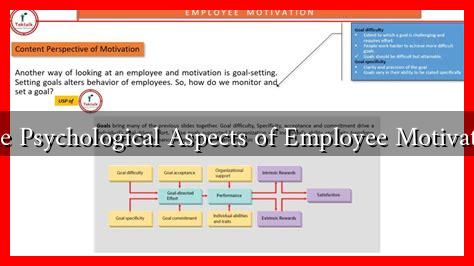-
Table of Contents
What Are the Psychological Aspects of Employee Motivation in 2025
As we move further into the 21st century, the landscape of employee motivation is evolving rapidly. By 2025, organizations are expected to adopt more nuanced approaches to understanding what drives their employees. This article explores the psychological aspects of employee motivation, highlighting key theories, trends, and practical applications that are shaping the future of work.
Theoretical Foundations of Employee Motivation
Understanding employee motivation begins with established psychological theories. Two of the most influential theories are Maslow’s Hierarchy of Needs and Herzberg’s Two-Factor Theory.
- Maslow’s Hierarchy of Needs: This theory posits that human motivation is driven by a series of hierarchical needs, from basic physiological needs to self-actualization. In 2025, organizations are increasingly recognizing the importance of addressing these needs holistically.
- Herzberg’s Two-Factor Theory: Herzberg identified two sets of factors that influence motivation: hygiene factors (such as salary and work conditions) and motivators (such as recognition and responsibility). Companies are now focusing on enhancing motivators to foster a more engaged workforce.
The Role of Psychological Safety
In 2025, the concept of psychological safety has gained prominence as a critical factor in employee motivation. Psychological safety refers to an environment where employees feel safe to take risks and express their ideas without fear of negative consequences. Research shows that teams with high psychological safety are more innovative and productive.
For instance, a study by Google found that teams with a high level of psychological safety were more effective than those that did not prioritize this aspect. Companies are now implementing training programs and workshops to cultivate a culture of openness and trust.
Intrinsic vs. Extrinsic Motivation
Understanding the balance between intrinsic and extrinsic motivation is crucial for organizations aiming to enhance employee engagement. Intrinsic motivation comes from within the individual, driven by personal satisfaction and interest in the work itself. Extrinsic motivation, on the other hand, is influenced by external rewards such as bonuses and promotions.
- Intrinsic Motivation: In 2025, companies are increasingly focusing on fostering intrinsic motivation by providing opportunities for personal growth, autonomy, and meaningful work. For example, organizations like Zappos have implemented self-management practices that empower employees to take ownership of their roles.
- Extrinsic Motivation: While extrinsic rewards remain important, organizations are recognizing that they should complement rather than replace intrinsic motivators. A study by the Harvard Business Review found that employees who are intrinsically motivated are more likely to perform better in the long run.
The Impact of Remote Work on Motivation
The COVID-19 pandemic accelerated the shift towards remote work, and by 2025, this trend is expected to continue. Remote work presents unique challenges and opportunities for employee motivation.
- Flexibility and Autonomy: Remote work offers employees greater flexibility, which can enhance motivation. A survey by Buffer found that 32% of remote workers cited flexibility as the biggest benefit of working from home.
- Isolation and Disconnection: Conversely, remote work can lead to feelings of isolation, which may negatively impact motivation. Organizations are implementing virtual team-building activities and regular check-ins to combat this issue.
Case Studies: Successful Motivational Strategies
Several companies have successfully implemented innovative motivational strategies that can serve as models for others:
- Salesforce: The company has integrated wellness programs that focus on mental health, providing employees with resources to manage stress and maintain work-life balance.
- Netflix: Known for its culture of freedom and responsibility, Netflix empowers employees to make decisions, fostering a sense of ownership and accountability.
Conclusion
As we approach 2025, understanding the psychological aspects of employee motivation is more critical than ever. Organizations that prioritize psychological safety, balance intrinsic and extrinsic motivators, and adapt to the evolving landscape of remote work will be better positioned to engage their workforce. By learning from successful case studies and implementing evidence-based strategies, companies can create a motivated and productive environment that benefits both employees and the organization as a whole.
In summary, the future of employee motivation lies in a comprehensive understanding of psychological principles, a commitment to fostering a supportive culture, and an adaptability to changing work environments. For further reading on employee motivation and workplace psychology, consider exploring resources from the American Psychological Association.


